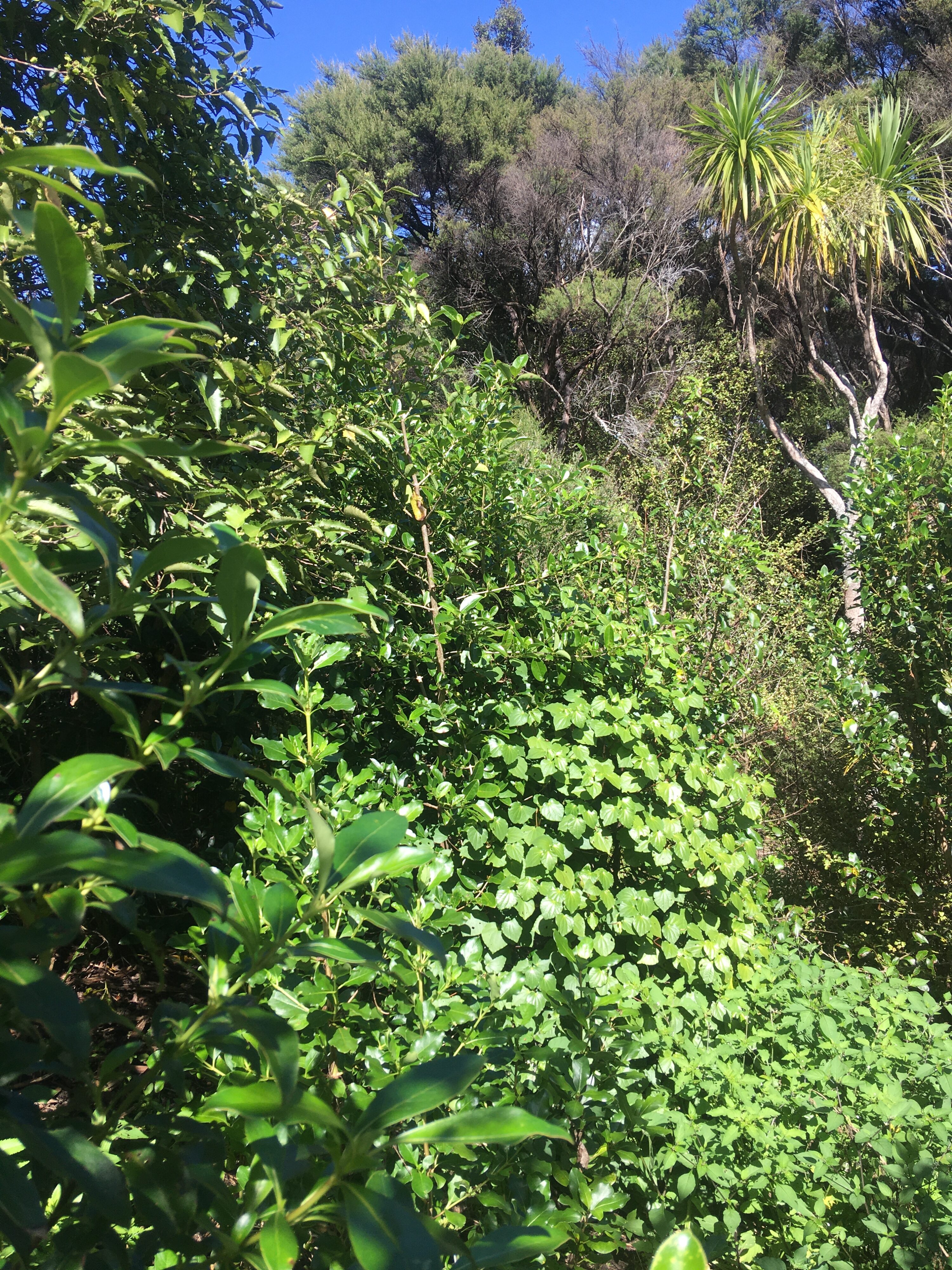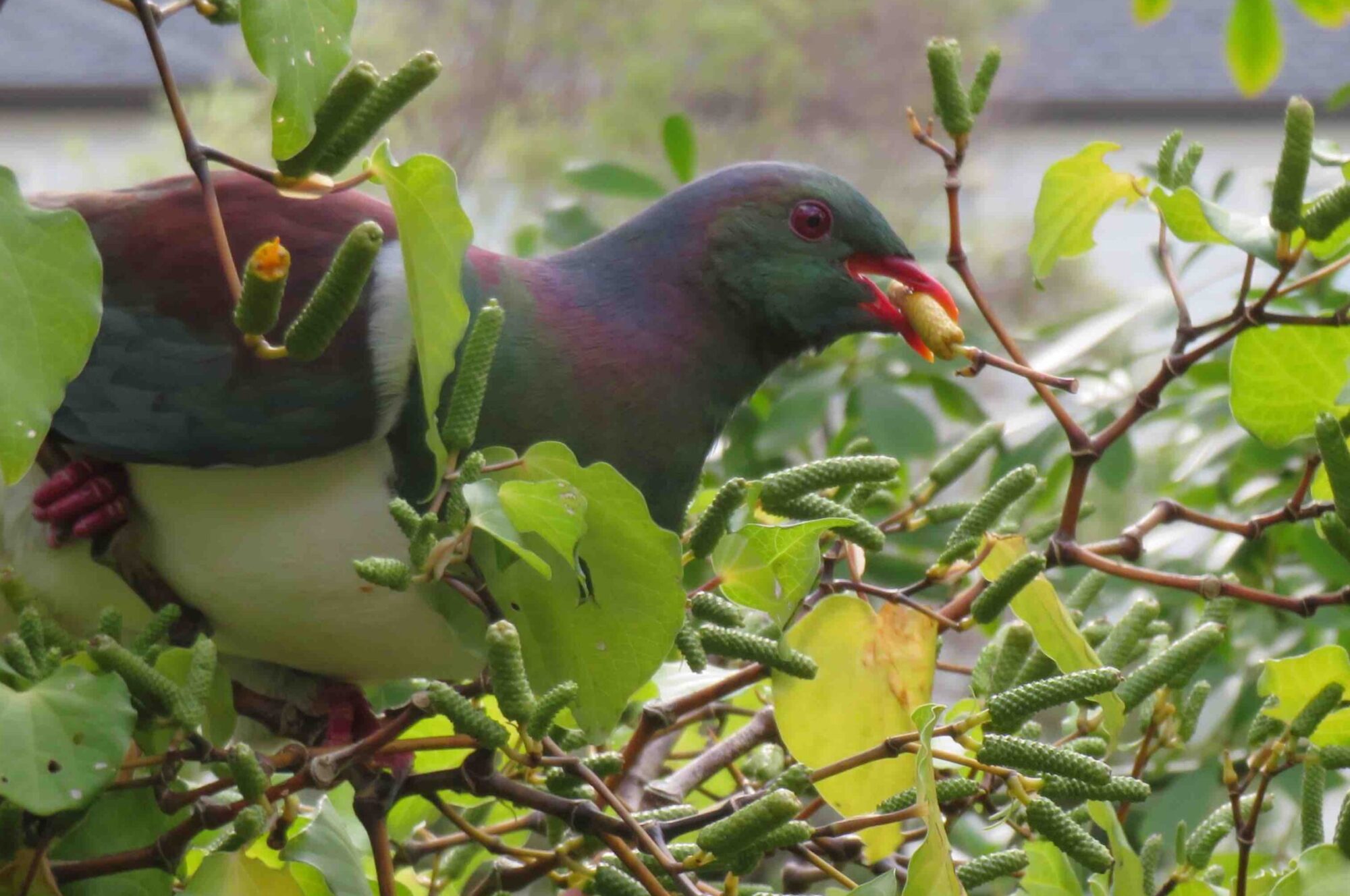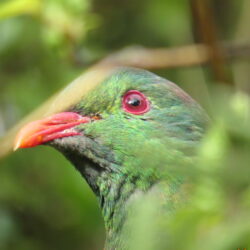Our handweeding techniques were developed through our 35 years of experience hand-weeding North Shore reserves and neighbouring gardens, observing closely, monitoring regularly, and assessing the results.
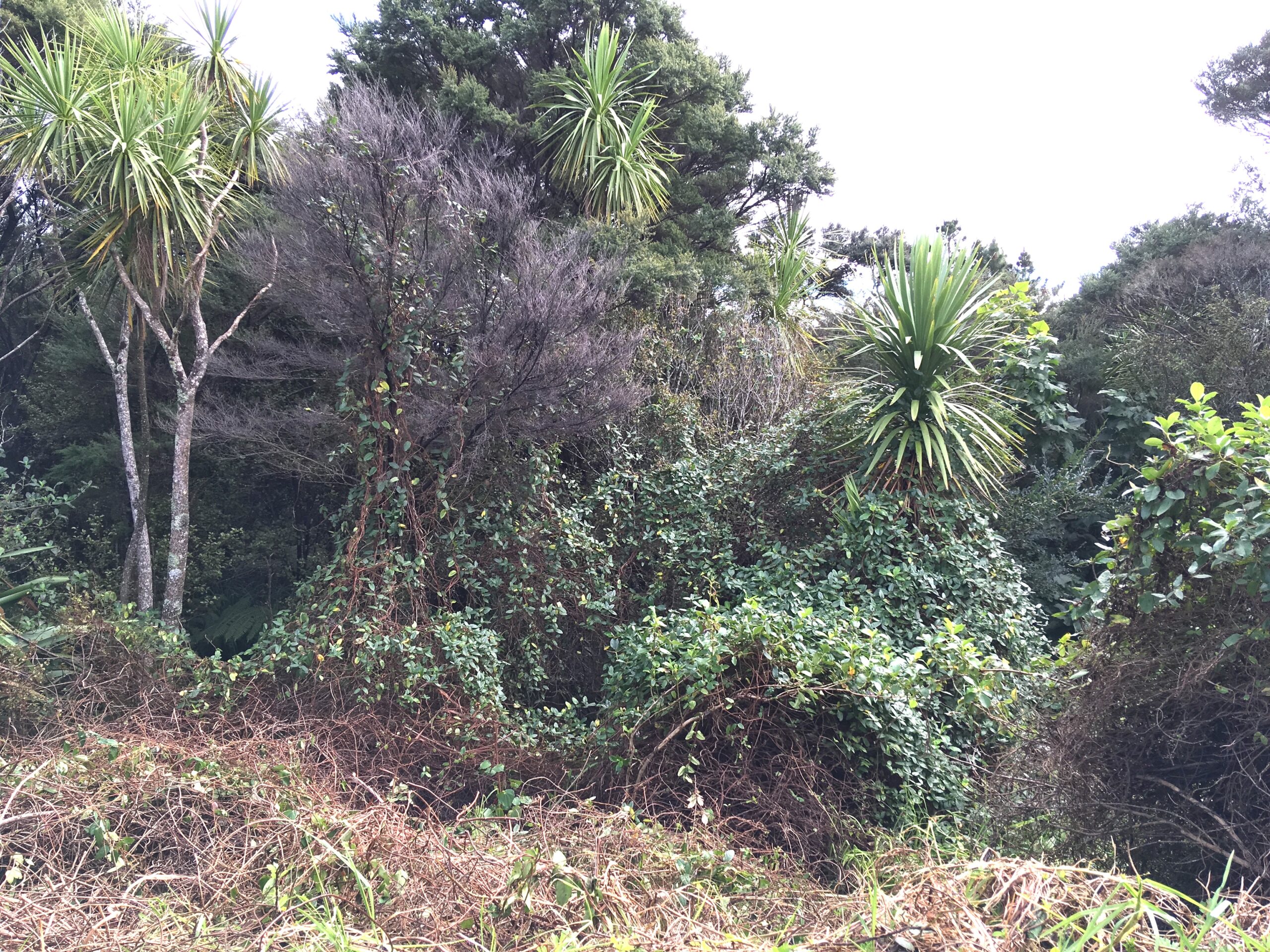
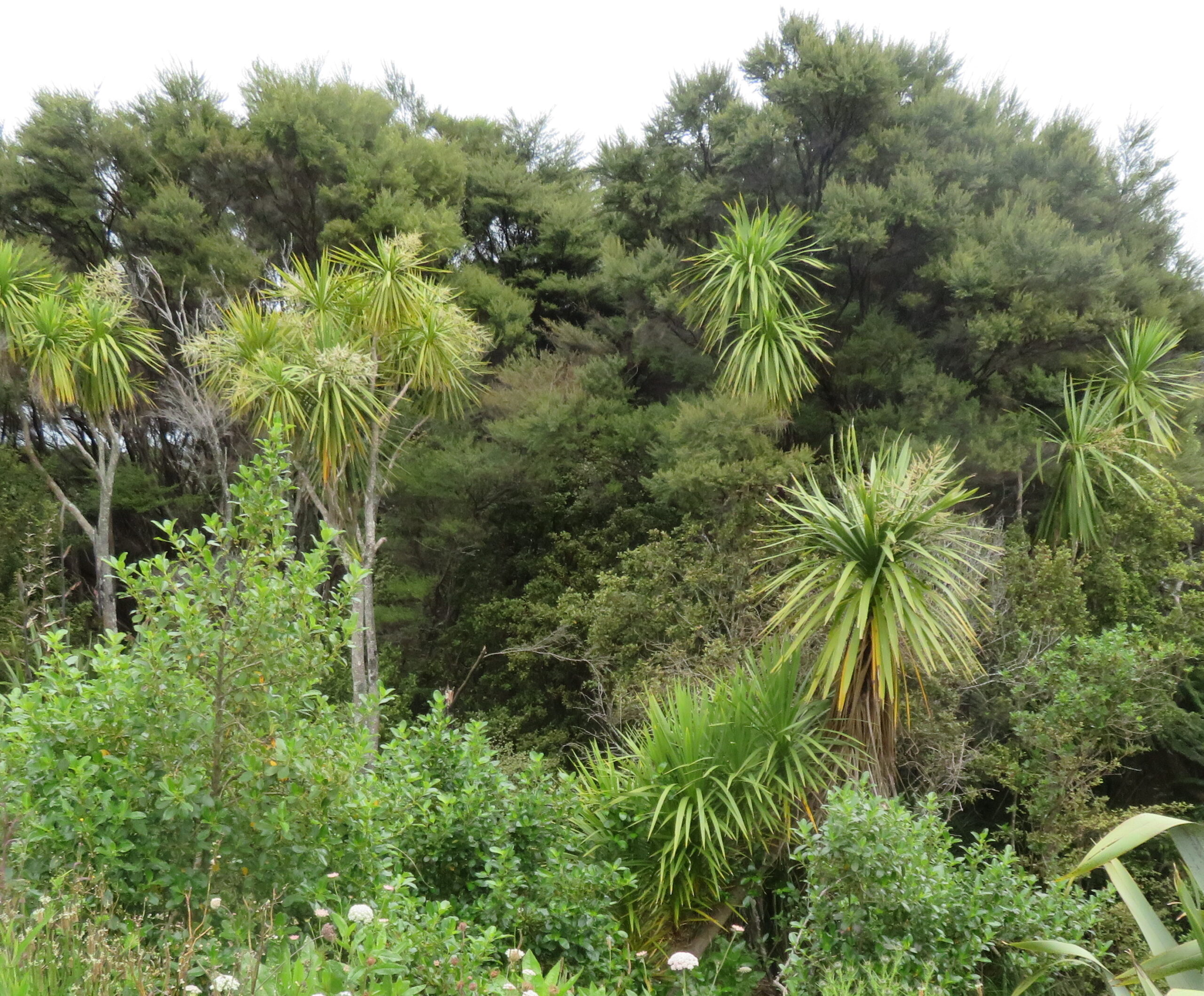
Above: Gahnia Grove, Eskdale Reserve, Hillcrest: before and after the first 4 months of restoration
A site assessment determines the potential for weed-free shrubberies and borders, food gardens and the restoration of weedy wild areas to intact native plant communities.
Thorough plant identification allows us to optimize our approach for each location’s unique habitat, landform, soil, water flow, and existing vegetation.
We conserve soil, minimising its compaction or erosion, by keeping all ground covered with vegetation , whether as living plants or as woody mulch.
Where we must walk over plant roots or on wet ground, we create a little path by arranging woody material, gradually building it up as materials come to hand, till it forms an “organic swale path”, with a non-slip surface that filters and drains surface water.
We weed by hand, sometimes using secateurs, loppers or a hand saw. Weeding is selective, to maintain ground cover preventing drying, erosion or new weed invasions. Timing is strategic to maintain ground cover and habitat, and tailored for each site based on plant, soil and water conditions.
Below: A titoki seedling, spontaneously germinated in a small patch of native Basket grass after honeysuckle, Blue corn lily and Bulbil Watsonia were removed. Both the weed African club moss and the fallen ponga fronds are contributing to valuable ground cover, conserving moisture, preserving habitat for invertebrates, and creating humus for new seedlings to germinate in.
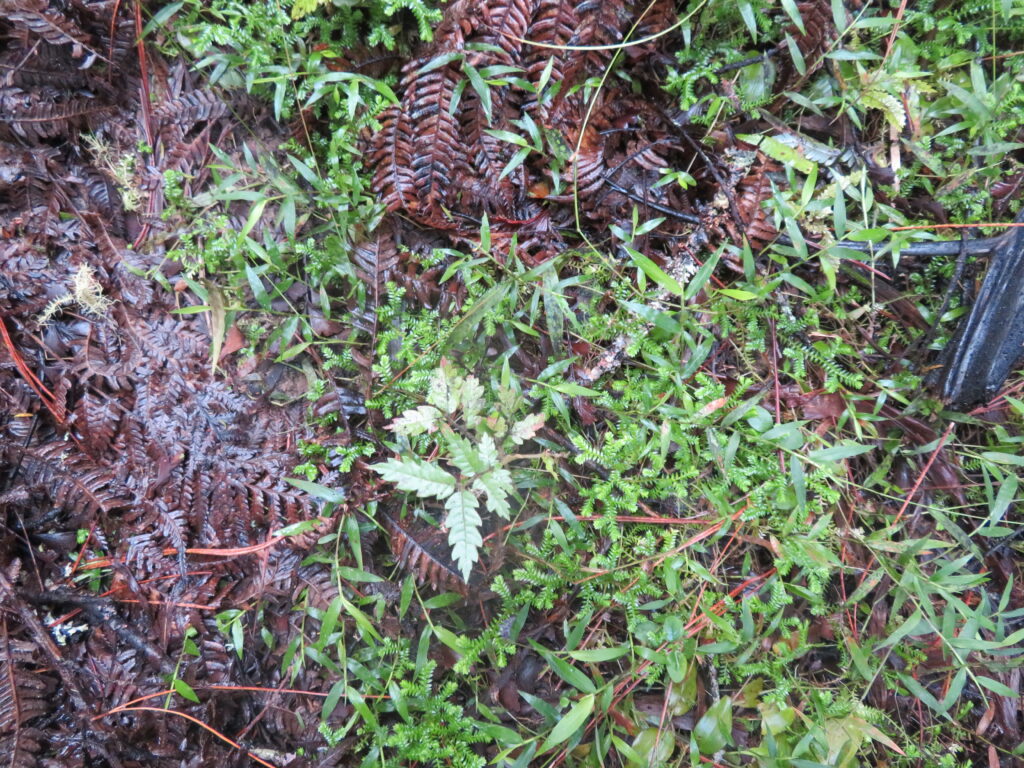
As we weed we identify those wild plants likely to be helpful to ongoing weed control or to become an attractive and functional part of the site; from small trees that attract tui and kereru, to tiny native ground-covers that multiply by themselves, including native grasses, sedges and mosses. Native to NZ and Australia, “Weeping grass” (Microlaena stioides) can be walked on, and left long or mown to produce a lawn.
(Thanks to Geoff Davidson of Oratia Native Plant Nurseries for that information. His pioneering nursery has now closed, but its website remains accessible to all, an online encyclopaedia of New Zealand native plant cultivation for home gardeners and environmentalists).
Below: A damp area under trees, five years after hand weeding of dense vine and shrub weeds, is now lush with two native grasses: “Weeping grass” Microlaena stipoides, and “Basket grass” Oplismenus hirtellus.
(NB Microlaena stipoides has sharp seeds that may be problematic for dogs that eat grass).
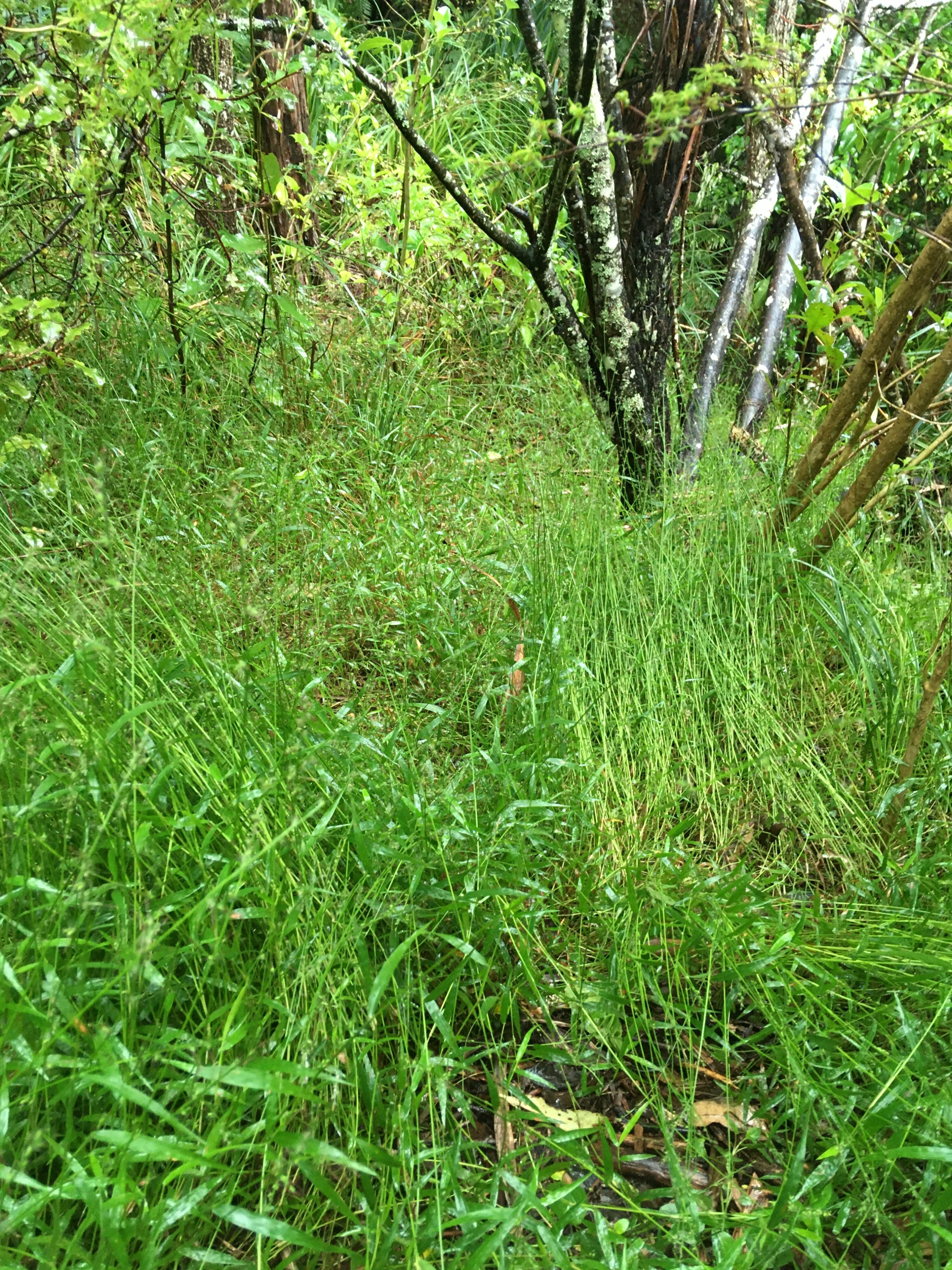
Below: The native “Basket grass” (Oplismenus hirtellus), is commonly found wild, seldom needs any control, and supports the development of both ornamental plants and native seedlings
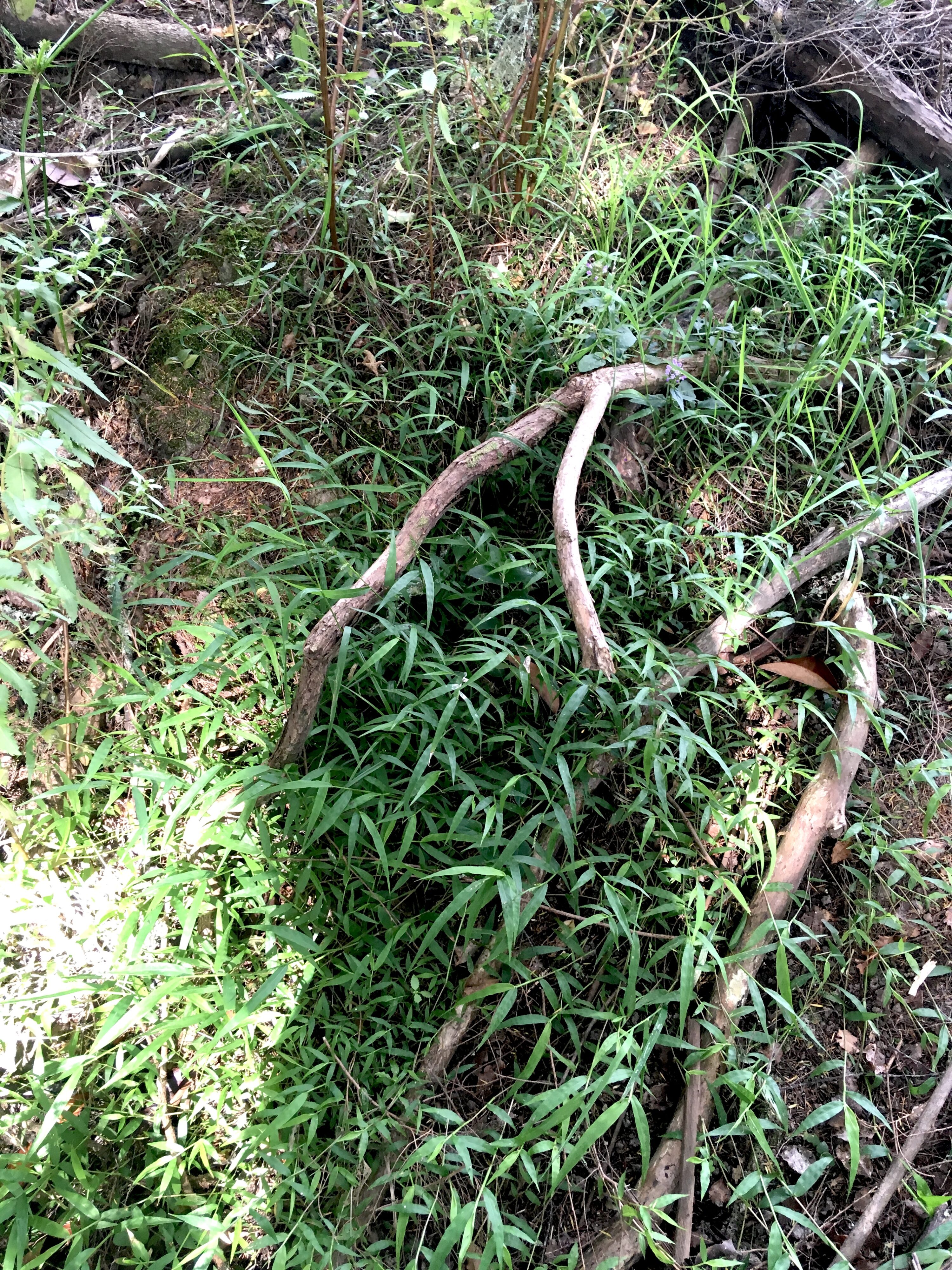
On-site decomposition of plant materials
Our weeding is most cost-effective and gives optimum results with on-site decomposition of plant materials and the spontaneous regeneration of wild native plant communities.
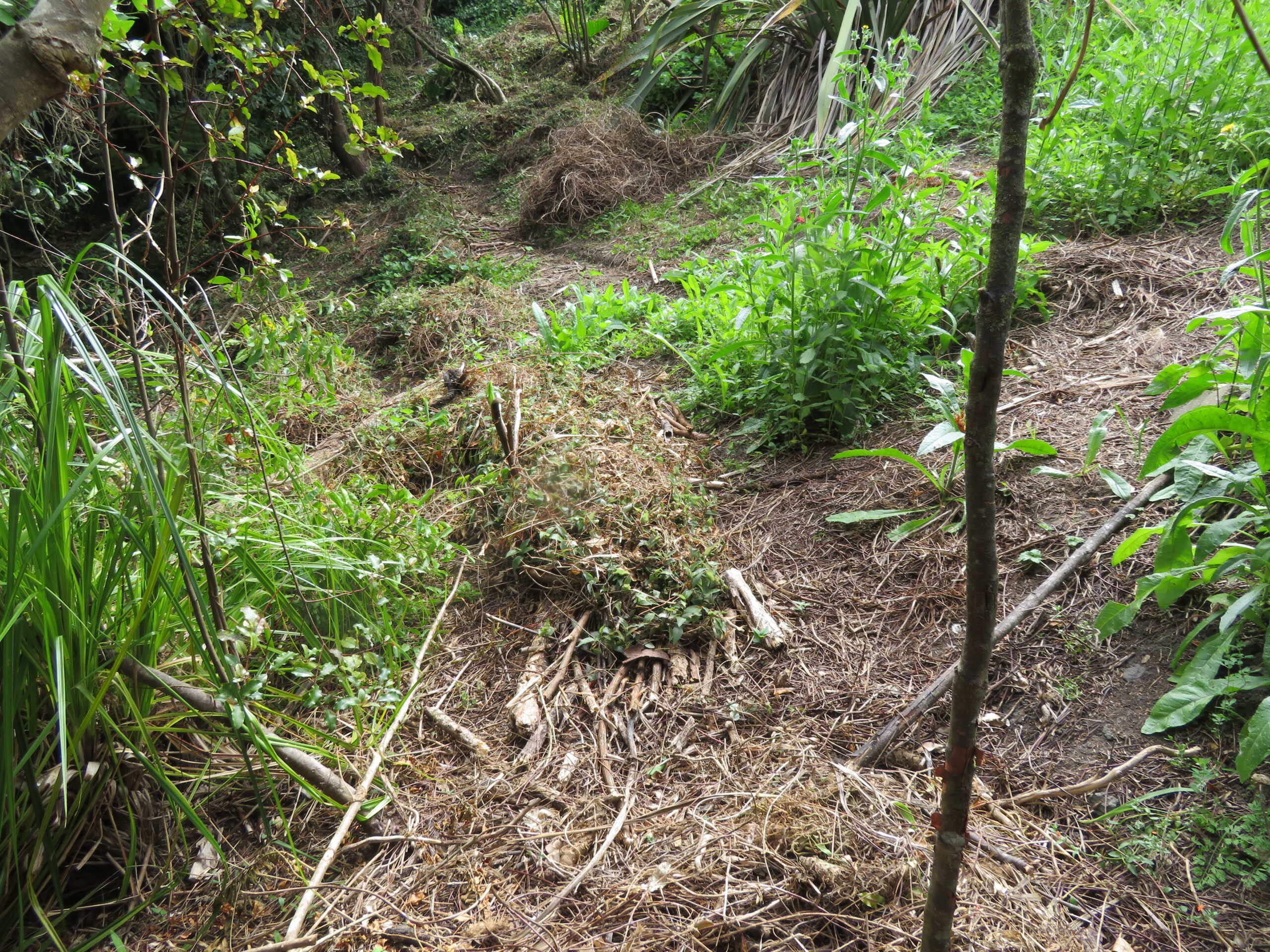
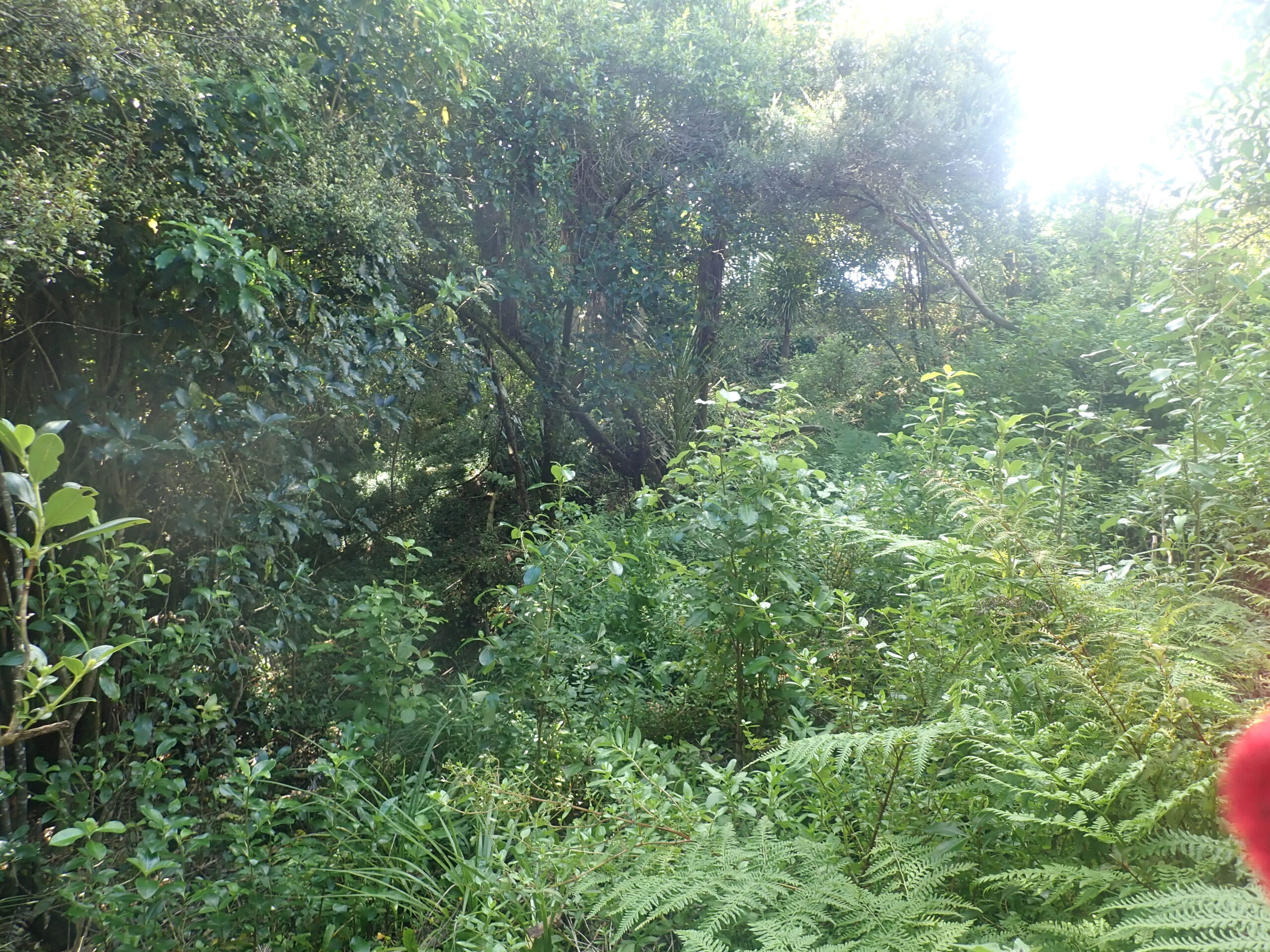
Where weeds have grown and decomposed for years, in the absence of herbicides, we find a rich, living soil. Liberated from invasive weeds by ongoing plant identification and hand-weeding, garden plants thrive, and the precious remnants of native forest flourish among new generations of seedlings arising spontaneously from native seeds and spores present in the soil, brought by birds, or blown on the wind.
Weeds and prunings are sometimes referred to as “garden waste”. With thoughtful preparation and arrangement, they are a valuable resource.
We carefully manage the on-site decomposition of almost all weeds and prunings, cut into pieces and arranged neatly as mulch for moisture retention and weed suppression or composting them in a hidden area or in a bag. Weeds that reproduce vegetatively, eg from tubers or stems, are thoroughly rotted or dried (according to species) before being used freely as ground cover or compost.
We tidy up ground litter, fallen leaves etc as we go, adding them to mulch or compost to improve the soil and make weeding easier next time, saving time and costs in future weed control.
Woody plant materials are used as mulch, shelter fences, or to create absorbent, non-slip paths.
Below: Native Plant trail, Kaipatiki Stream, Witheford Reserve, Glenfield – public entrance on Kaiipatiki Rd (In this 2019 photo the path borders are temporarily defined by piles of Tradescantia removed from a streambank out of sight on the right)
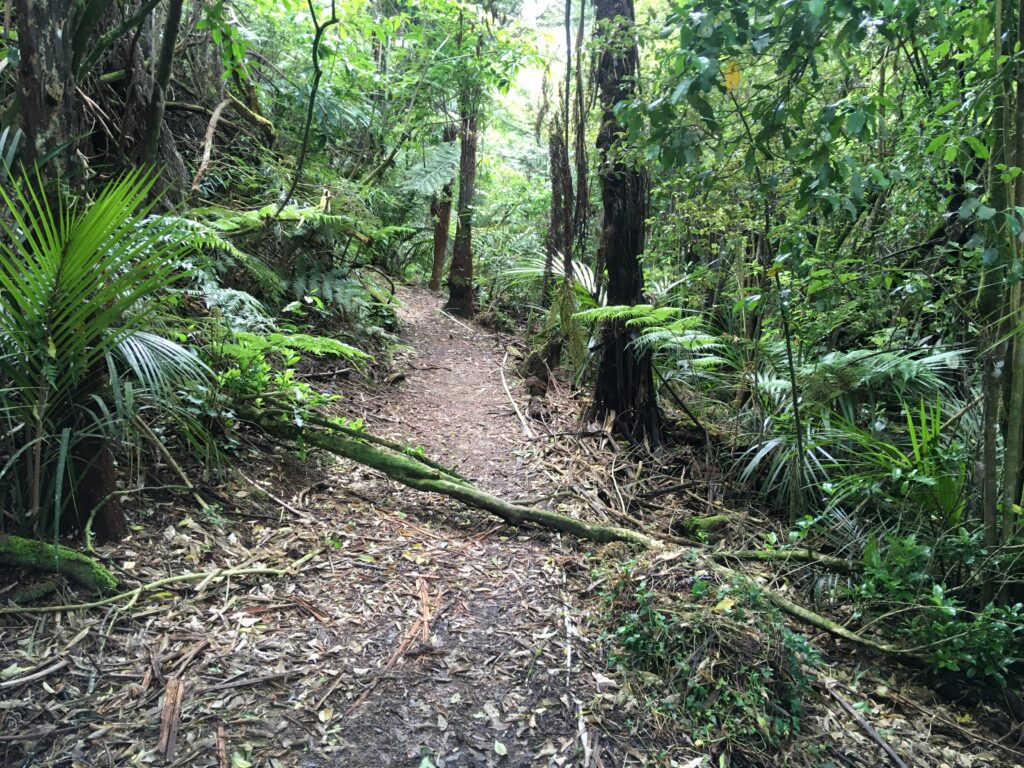
Below: Tiptoe Path, Gahnia Grove, Eskdale Forest, Hillcrest (no public access to restoration site)
Dead Harakeke flower stems, fallen manuka, and woody weeds were used for this path, built up as materials became available until it was about 30cm deep.
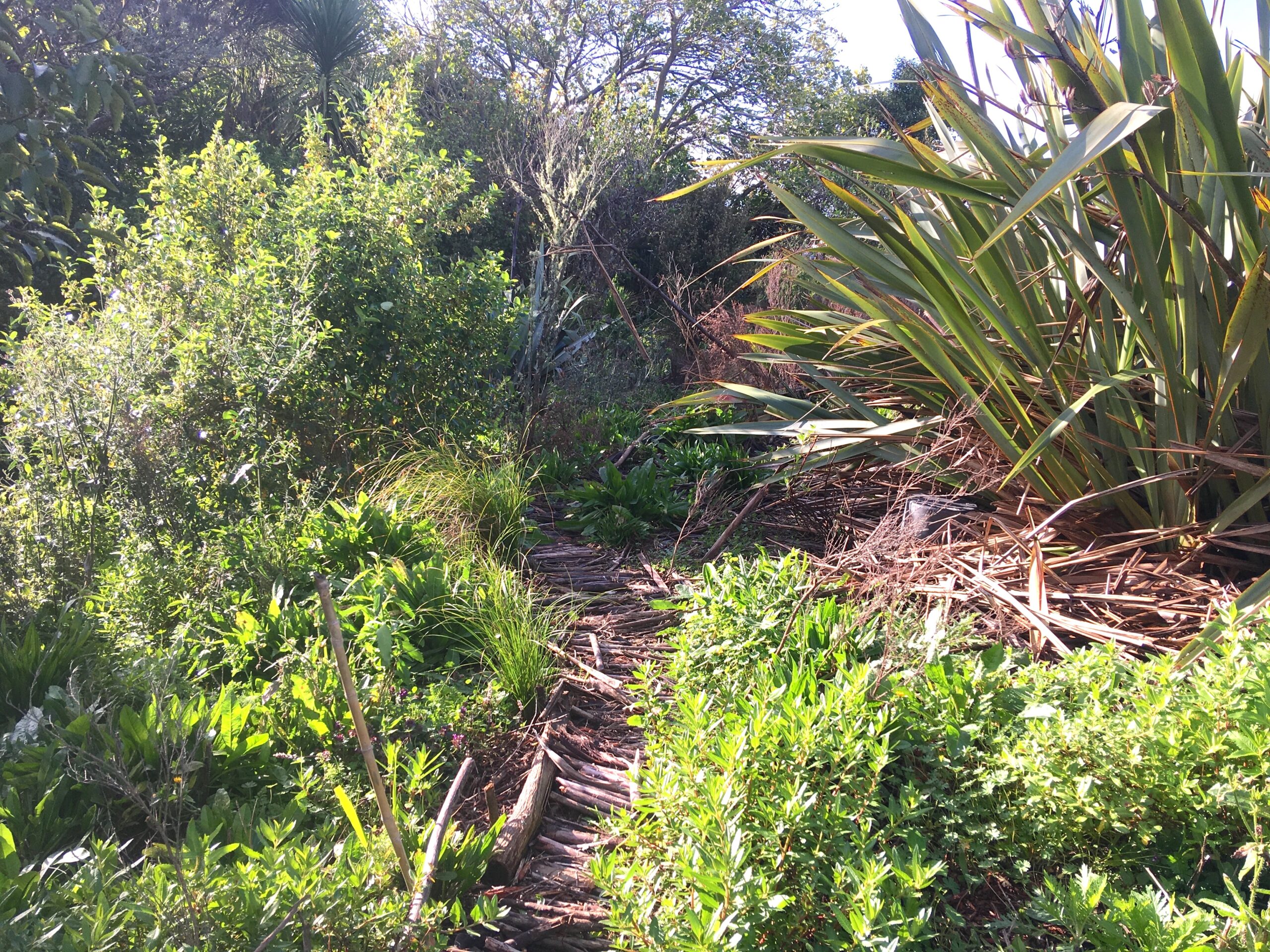
The resulting rough, narrow path provided a walkable non-slip surface in all weathers, allowing weeding and monitoring without compacting the clay soil or disturbing the revegetation. (By 2023 the regeneration was 2-3m high throughout this area, and the woody materials have been incorporated into the soil and rich ground litter).
As mulch, the slow rotting fallen leaves from Harakeke/NZ flax and Ti kouka/cabbage tree are especially useful in retaining moisture.
We use specific composting techniques for weeds that spread vegetatively, such as Tradescantia, wild ginger, Convolvulus, Jasmine, kikuyu, bindweed, Agapanthus, Japanese spindle tree, and Flame tree.
Below: Tradescantia, dense in foreground before intervention is being gathered into piles, eg at left of the low ti kouka, where it will provide habitat and mulch while decomposing. Its regrowth is managed in the same way as revegetation develops in the cleared areas, until Tradescantia is eradicated from a site.
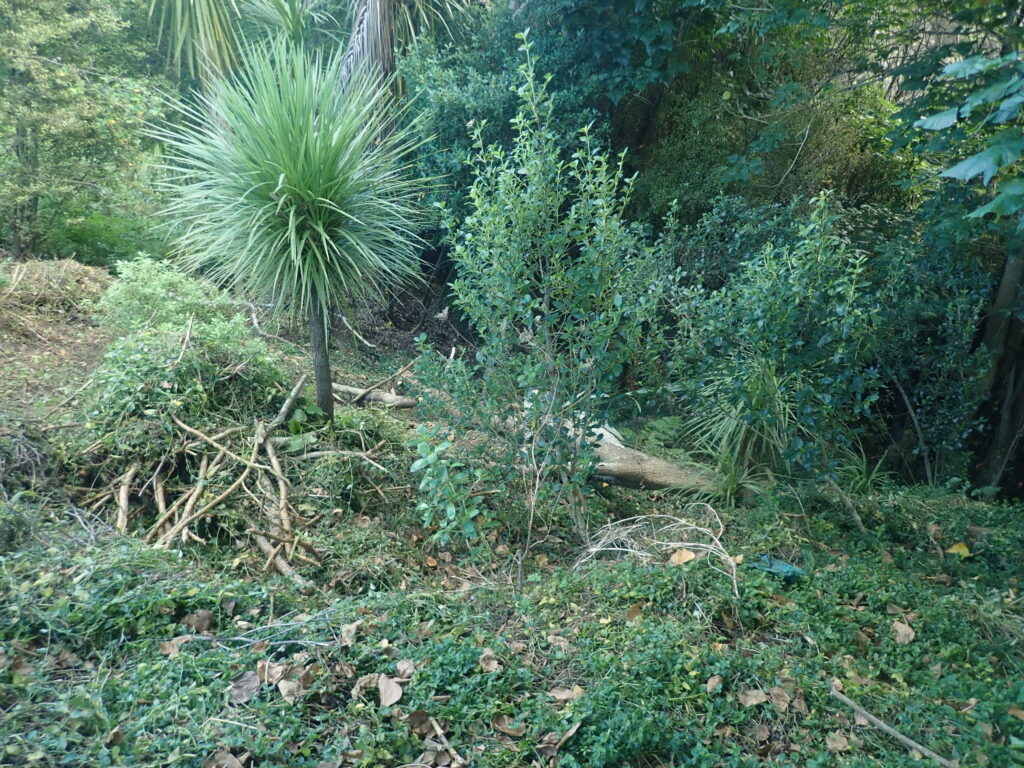
Regeneration through spontaneous plant community development
This depends on the recognition of wild native plants, seedlings and sporelings, and the needs and likely impacts of each species.
Whether planted or wild, the revegetation must be closely monitored for new weed invasions, which are identified and either retained (as in the above photo) until native vegetation is ready to take up the space, or in the case of vine, shrub and tree weeds, controlled before they become established and costly to remove.
Bush sedge (Carex lambertiana) spontaneously populated this streambank after Tradescantia was removed. Among the Carex there are also tree seedlings… karamu, ti kouka and mahoe … and baby ferns.

By recognising and protecting the native or other desirable plants that germinate from the seed-bank already in the soil, are dropped by birds, or are blown on the wind, we allow wild locally-native plants to gradually replace the weeds.
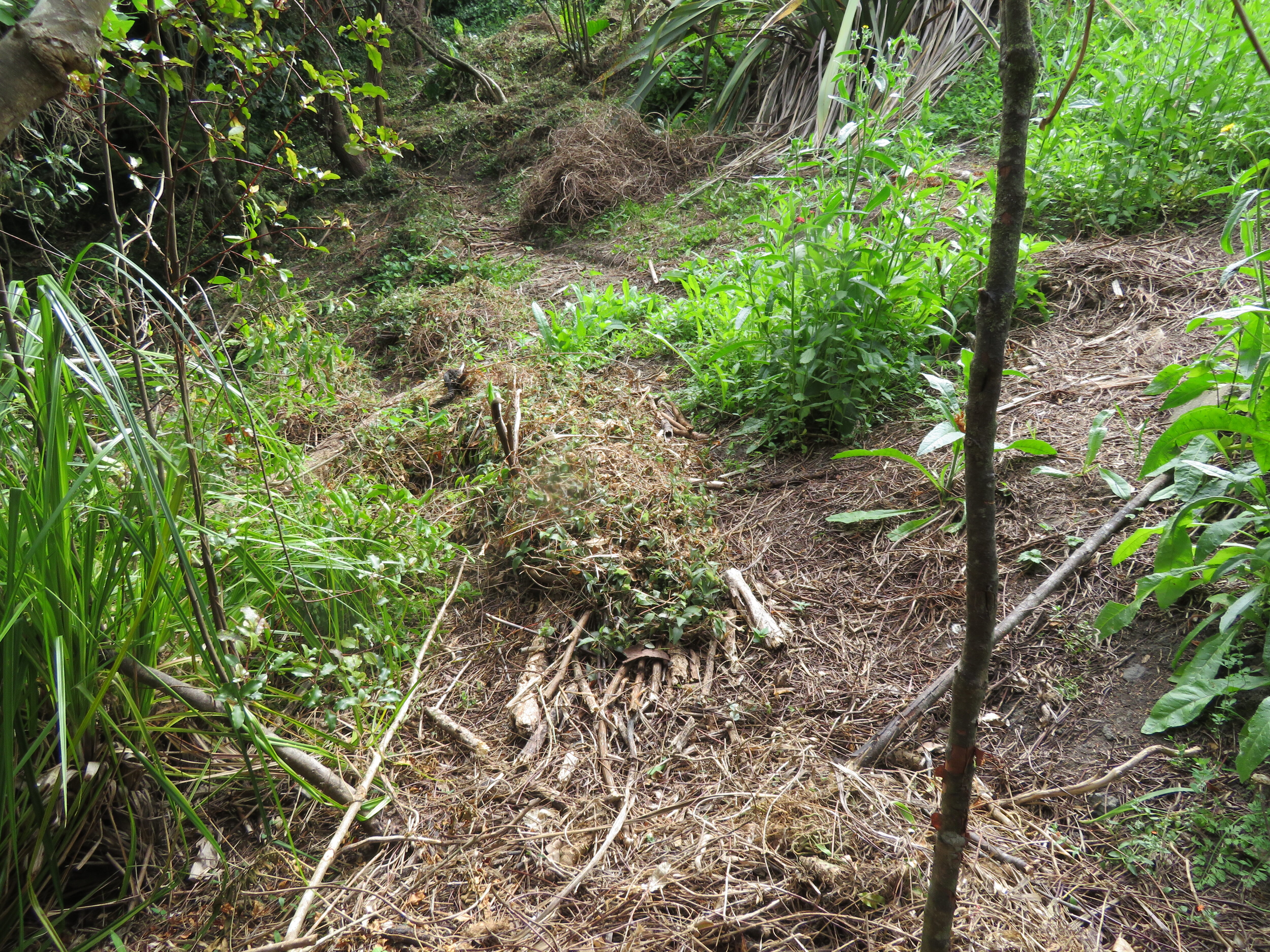

During dry periods, ground left bare by weed removal is inhospitable to new vegetation, and moisture loss affects nearby trees whose feeder roots are just below the surface throughout a wide area.
Patches of selectively retained weeds, scattered pulled weeds, and piles of decomposing weed, retain soil moisture and provide the sustenance for whatever comes next.

Most of the regeneration is in the moister soil where earlier piles of Tradescantia have decomposed, (though live remnants remain- foreground) and around the remaining piles of decomposing Tradescantia (extreme right).
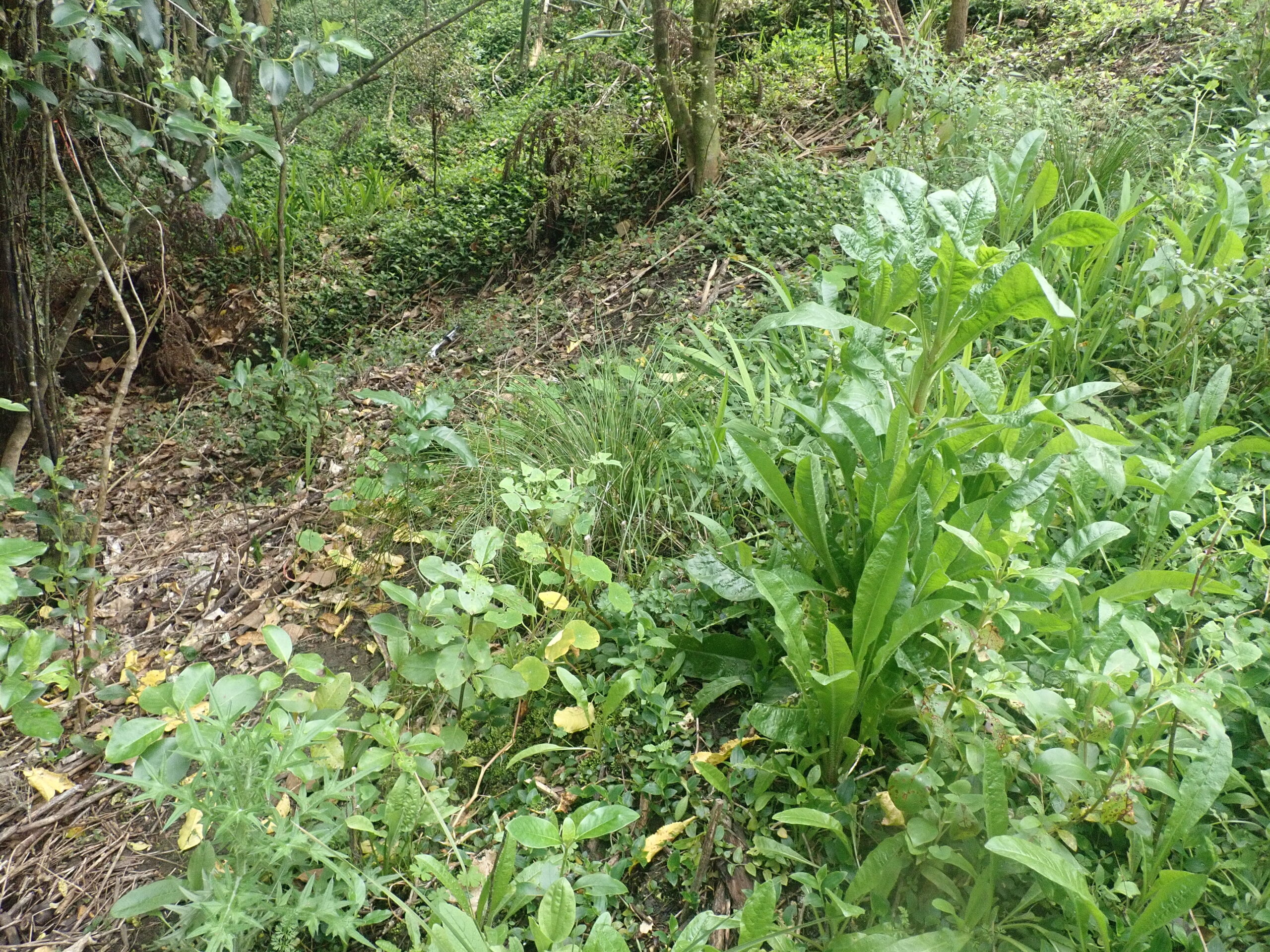

As the revegetation becomes denser, especially if shade is established by the growth of trees and shrubs , weed invasion becomes much less of a problem, requiring less frequent monitoring and less time spent weeding.
In areas that remain sunlit, the ongoing weeding required becomes increasingly easy as the soil becomes looser with the ongoing addition of gradually decomposing plant material or added arborist’ mulch.
This spontaneous revegetation can be supplemented with planting if needed. We recommend, and provide economically for clients, small native trees that attract birds, which in turn bring a wider range of seeds.
Below: In June 2020 a space about 30cm x 50cm was cleared among the less-aggressive weeds being retained for ground cover through drought, marked with orange tape, and 10 tiny wild karamu and kawakawa seedlings wrenched from a private property nearby were transplanted to this little space.
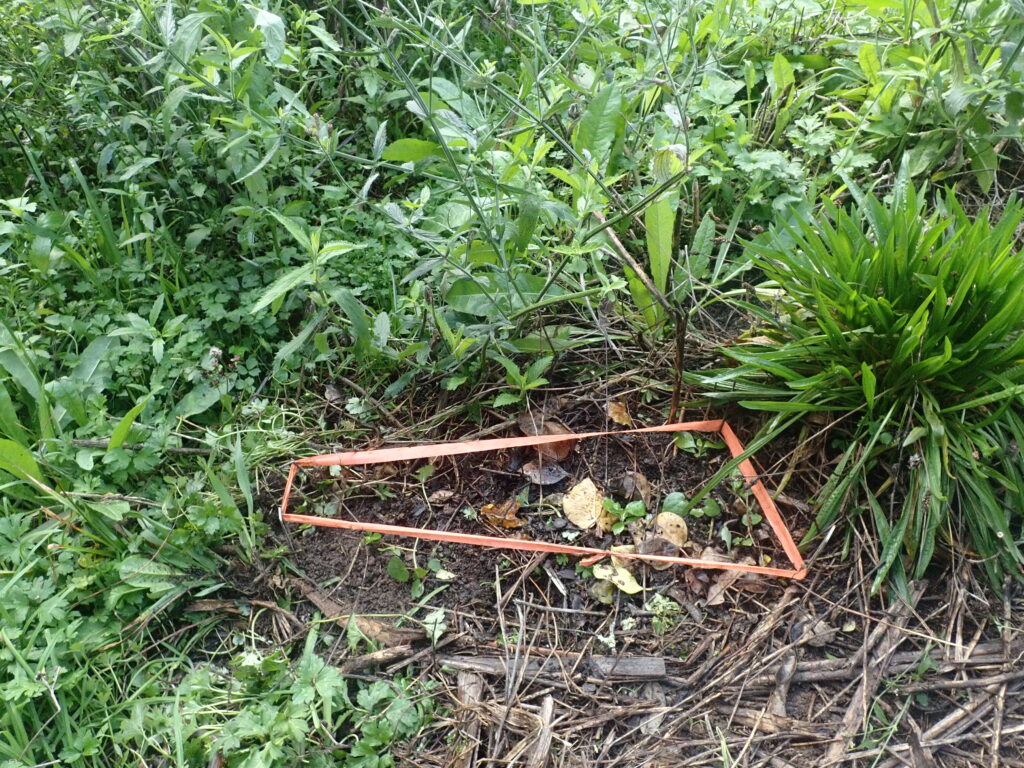

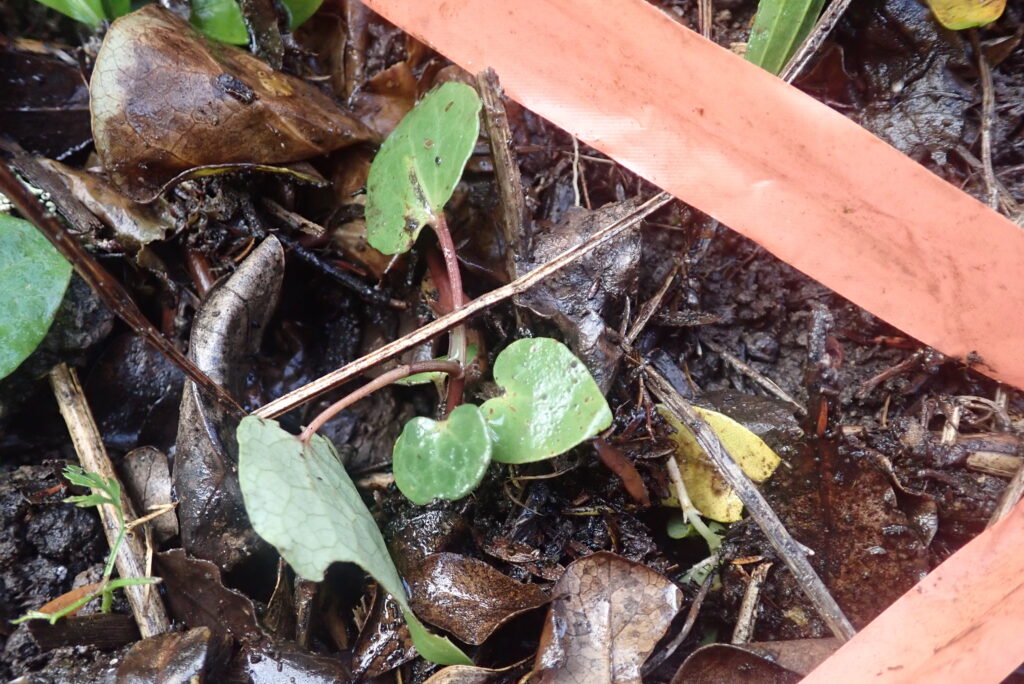
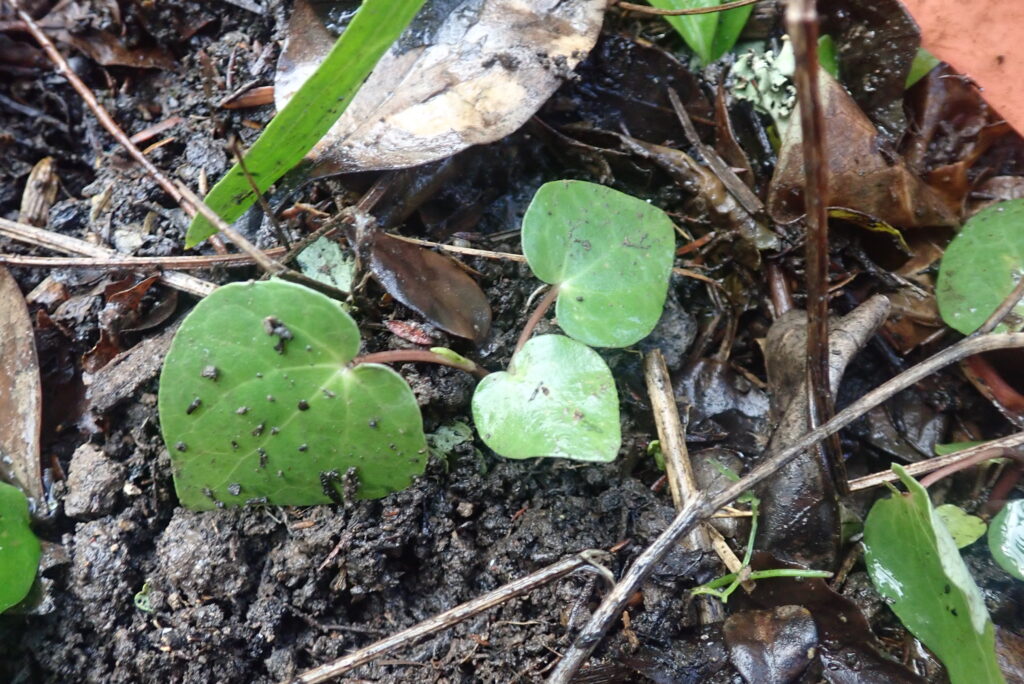



karamu
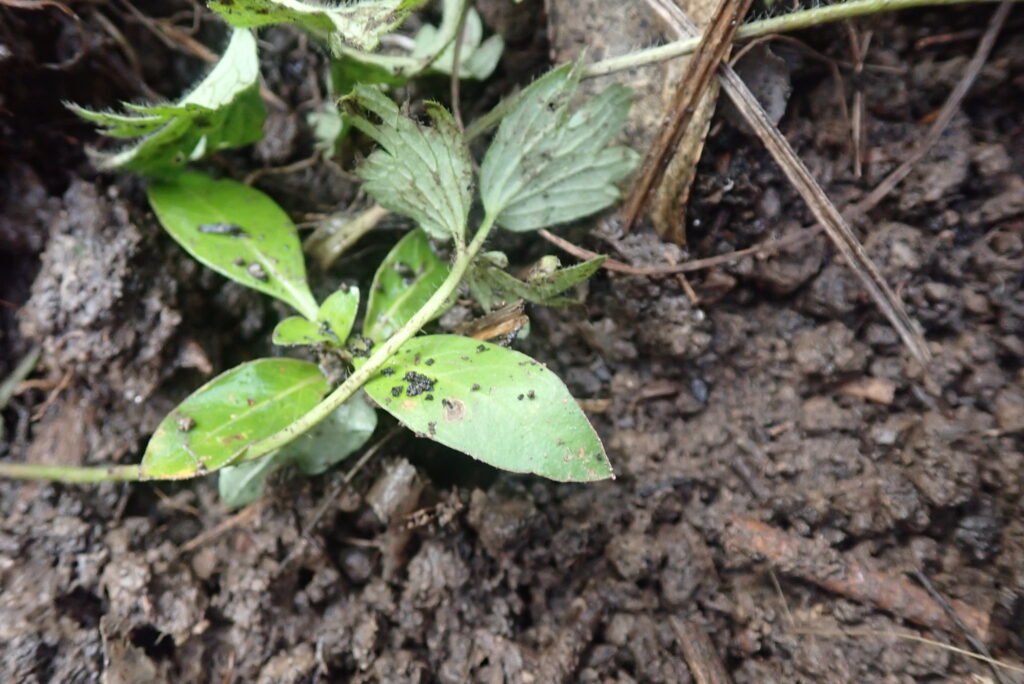
The following year about 7 of them were about 30 to 50 cm high, so a few were transplanted about a metre away.
Below: the kawakawa and karamu in the square metre are now about 2 metres high, sheltering one another and the previously-honeysuckle covered forest edge
